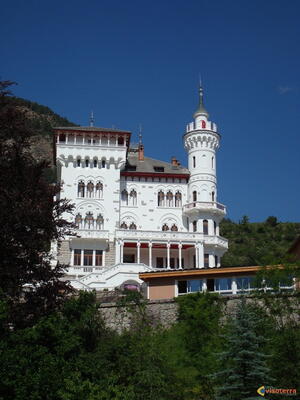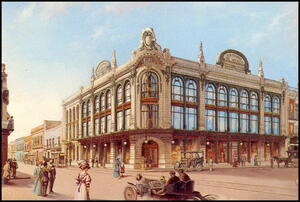Barcelonnette's Mexican connection
In the second half of the 19th century, young men in the Ubaye Valley— in the northernmost and least populated quarter of the Alpes-de-Haute-Provence départment—did something the French rarely do: they emigrated en masse to the New World.
The movement was started in 1821, when three brothers from the mountain village of Jausiers, near Barcelonnette, left for Mexico in search of a better life. Little is known of their history, or of the reasons why they chose this particular destination; what we do know is that they made a fortune dealing with fabrics and founded one of Mexico City's first department stores.
The Arnaud brothers never returned home. But their story fired the locals' imagination and soon, young men from Barcelonnette and the nearby villages began flocking to Mexico. The "Barcelonnettes," as they were known to the local Mexican population, were hardworking, thrifty and formed a close-knit community. In business, they proved exceptionally successful. Beginning as mere clerks and accountants in the Arnaud brothers' businesses, they soon opened their own stores and founded their own firms, attracting still more emigrants from the Valley.
In 1850, there were nine "Barcelonettes-owned" companies in Mexico; fourteen years later there were 45; and at the height of the Barcelonnettes economic expansion from 1864 to 1891 their number grew to 110. The lure of Mexico was draining the Ubaye Valley of its scarce human resources. "Every year," wrote a local historian in 1891, "the Mexican Minotaur takes away the best half of our children ..."
The first generation of Barcelonnettes had worked in the textile manufacturing and retail industries. Their children became industrialists, bankers and politicians: in the 1870s, the son of a Barcelonnette was governor of the Southern state of Puebla. Among the thousands of young mountain men who left the Ubaye Valley for the lights of Mexico, some 10 to 15 percent made very large fortunes and retired in Barcelonnette or Jausiers. "Mexican money" played an important part in the economic development of the Valley, particularly in the development of ski resorts in the early 1960s. Villas built by "Mexicans" still pepper the Ubaye landscape—stucco castles and Spanish colonial mansions overlooking Alpine meadows and tin-roofed villages.




